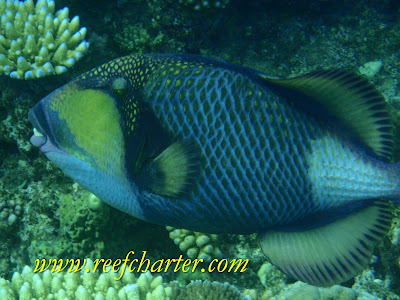
One of our guests’ favourite sights on our Great Barrier Reef Tours are the Giant Clams. They come in various brilliant colours and impressive sizes, colours include bright purples, reds and blues. Divers get to experience the larger specimens up close, but if you are not a certified diver don’t worry you can probably take an introductory dive (FAQ#5).
The giant clam, Tridacna gigas, is the largest living bivalve mollusk. They can weigh more than 200 kilograms (440 pounds), measure as much as 1.2 metres (4 feet) across, and have an average lifespan in the wild of 100 years or more. By day, the clam opens its shell and extends its mantle tissue so that the algae receive the sunlight they need to photosynthesize.
History and Legend
As is often the case with uncharacteristically large species, the giant clam has been historically misunderstood. It was known in times past as the killer clam or man-eating clam, and reputable scientific and technical manuals once claimed that the great mollusk had caused deaths; versions of the U.S. Navy Diving Manual even gave detailed instructions for releasing oneself from its grasp by severing the adductor muscles used to close its shell.
Today the giant clam is considered neither aggressive nor particularly dangerous. The process of closing the shell valves is slow enough not to pose serious threat. Furthermore, many large individuals are unable to close their shells completely.
Conservation Status
The IUCN lists the giant clams as vulnerable. There is concern among conservationists for the sustainability of practices among those who use the animal as a source of livelihood. The numbers in the wild have been greatly reduced by extensive overharvesting for food and the aquarium trade. On the black market, giant clam shells are sold as decorative accoutrements, and the meat, called Himejako in Japan, is prized as an honor.
Giant clams are found in abundance on our dive sites, and make brilliant photos that you are sure to treasure for years. If you don’t have a underwater digital camera, you can hire them through us as well. Just let us know at time of booking or the day before the trip.





